Malaga during the holy week of April smells of blooming orange flowers and incense, the streets are filled with the bustle of lively crowds and the sound of a steady march, occasionally interrupted by the ringing of a bell. After a while, the bell rings again and the sound of hundreds of footsteps can be heard, along with screams of “¡Guapa!”, which sound above the noise of trumpets and drums. From around a corner a huge procession appears marching rhythmically, with dozens of stately figures dressed in long, coloured tunics and pointed hats. The group moves at a steady pace along the street, concentrating on the commands of one man in charge, who is directing a group of men and women carrying a huge float.
Video
It’s a tremendous sight: the float measures 5-6 metres in length and it is topped by an enormous throne, on which a figure of the Virgin Mary is seated. The Virgin's figure is surrounded by hundreds of candles and flowers and a richly decorated canopy. There is no doubt that the Spanish Semana Santa or “Holy Week” is one of a kind, but seeing the enormity of the work put into this week-long show, one wonders who is behind the creation of all these spectacular floats and who carries them from the chapels and churches into the streets of Malaga? Why do they dress up in the traditional gowns and hats? Why do they suffer full days in the hot Spanish sun, carrying these huge, 3-ton floats around the streets of Malaga?
Cofradia - what does it mean?
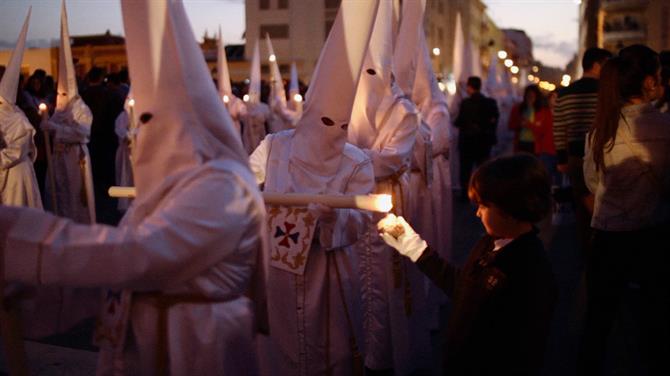
Spain-Holiday met with Eduardo Rosell Vergara, the Hermano Mayor (Big Brother) of the Brotherhood of Reales Cofradias Fusionadas in front of their headquarters at Calle Postigo de San Juan, Malaga.
We were met by an extremely elegant man who immediately invited us inside and lead us to the chapels containing the figures of Christ and the Virgin Mary, telling us their stories.
Vergara points to the statues and tells us: “This one is a statue of Santísimo Cristo de la Vera-Cruz y Sangre, the oldest statue carried in a procession in Malaga and here, you can see the figure of the Virgin Maria Santísima de Lágrimas y Favores.” He adds that “the famous Spanish actor, Antonio Banderas was born in Malaga and is a member of our brotherhood. He is a faithful servant to our Virgin Mary and wrote a hymn especially for her, which we always sing before leaving from the church on Palm Sunday.”
The Cofradia in the Catholic Church is a religious fraternity, gathering over their common faith and devotion to Christ, the Virgin Mary or a chosen Saint.
Cofradias that participate in Holy Week are penitential fraternities. Each of them (in Malaga there are 44) has its own status and rules and all of them are subject to the dioceses of the province. The cofradias of Málaga are subject to Malaga’s diocese.
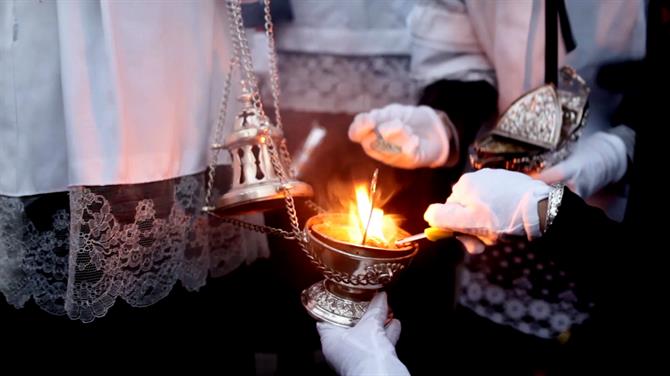
The Brotherhood is based on a clear hierarchical structure, headed by the Hermano Mayor, who is elected by the Board of the Brotherhood. There are also financial executives and secretaries, etc. Vergara has been charge of the brotherhood for seven years and has been a member of "Fusionados" for 47 years.
How do you become a member of a Brotherhood?
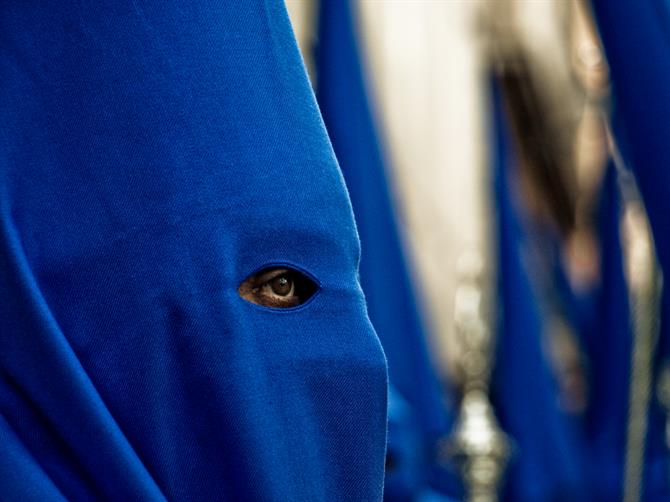
The official website of each Brotherhood states that in order to become a member, simply complete the application form and email the association. The small print indicates that anyone who is already a member of the fraternity can act as a witness and state that the candidate is Catholic and wants to participate in the life of the fraternity. The applicant should provide his/her bank account number and authorise the collection of the €48 fee.
It should not be surprising that the cofradias also have members from outside Malaga. Vergara mentions that some members come from other cities and even other countries. At present, the Reales Cofradias Fusionadas has 3,000 full members (those who pay annual membership fee) and is the largest Brotherhood in Malaga.
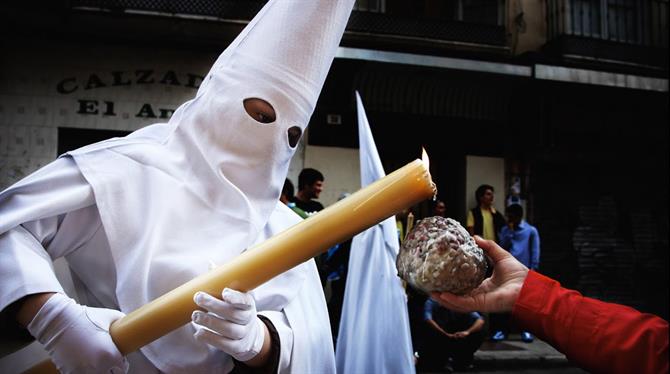
Evaristo Díez Alcaraz, a board member of the Reales Cofradias Fusionadas, jokes that the supposed rivalry between the fraternities is not true. He says: “It's not like a football. There is no Madrid or Barcelona, there is no competition, you need to choose the best Brotherhood for you. You can be a member of several Brotherhoods at once, but you can not belong to the board of any of them.”
Interestingly, it’s very difficult to be excluded from the Brotherhood. One way is to wear the traditional robes and hat in the streets outside of Holy Week.
First brother, then Spaniard
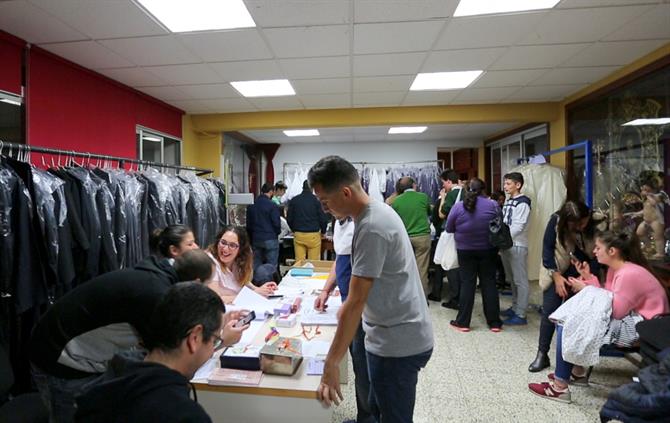
The corridors on the first floor are filled with a crowd. Someone is shouting, someone else enthusiastically tells a story to the big group around him, people burst out laughing. We enter a room with black, cream and purple tunics on tables and stands. From behind glass cabinets, the painted eyes of angels and cherubim figures watch us.
The room quickly fills with children, teenagers, men and women of all ages. On the table someone has placed a list of names, with checks in front of the names of those who have already received their tunic. The atmosphere is pleasant and relaxed, everyone appears well acquainted with each other and enjoys the meeting.
“How long have you been a member of the fraternity?” I ask the boy who just entered the room. Carlos is 20 years old and has been a member his whole life. Immediately after birth, his father enrolled him in "Fusionados" and he first attended the procession as an altar boy at the age of nine.
Another boy named Eduardo, the son of the President, remembers his childhood as walking in a tiny tunic next to his dad. In his family, all his uncles and cousins belong to the same association.
Evaristo, who joined in on our conversation, laughs and adds that in Malaga when a child is born, you first enroll him in the Brotherhood and register the birth afterwards. He has just celebrated his 47th anniversary as a member.
He says: “Before we could participate in a real procession we had organised processions at home, playing our favourite roles in the corridors of our house. We went to Fusionados with my classmates, someone suggested we join and a few days later we were all members of the fraternity. At that time my motives were mostly social, not religious. It changed with time.”
Be a member 365 days a year
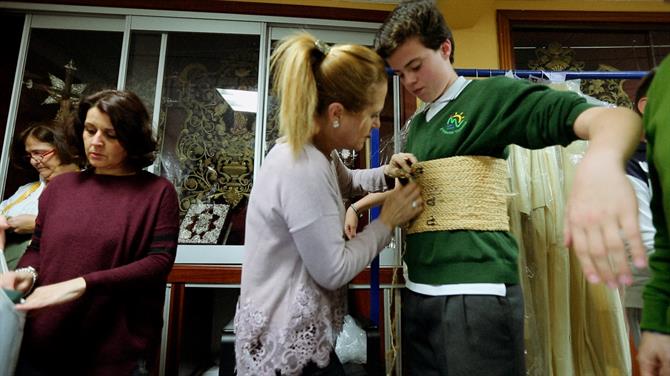
Brotherhoods appear on the streets a few days before Holy Week and in the evenings you can hear dozens of drums and trumpets repeating the Holy Week marches. The city centre is filled with devoted customers visiting special shops looking for new pointed hats while tailors are putting the final touches to the last tunics before the big event on Palm Sunday.
For outsiders, it seems that the activity of the fraternity is limited to a few weeks of work before Holy Week. We naively forget that the members do not wear the traditional outfits on a daily basis to take a stroll around the city.
All activities related to statutory activities and social fraternities are financed by membership fees, but also from raffles, charity dinners and donations. During Malaga’s Feria, the fraternity has its own stand (caseta) in which it also organises charity events. The funds are allocated to support different social causes by the biggest foundation in Malaga - Fundación Lagrimas y Favores, with Antonio Banderas as president.
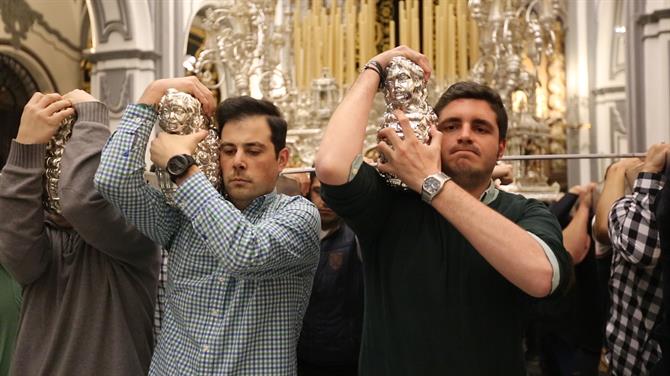
Although the Reales Cofradias Fusionadas has about 3,000 members, only a fraction of them are included in the daily activities. Those who actually feel responsible for what is happening in the brotherhood (150-200 people, depending on the season), appear in the fraternity headquarters almost every day. Their time is purely voluntary with most working full time, having a family and a social life.
“Family help is the basis on which our work is built”, Evaristo explains. “Families are the real ones who suffer from the fact that we are not home. On the other hand, most families do not know a different life, my wife met me when I was already a member of the fraternity, so the life of the fraternity is really inseparable with family life.”
Positions: Mayordomo, submarino, hombre de trono
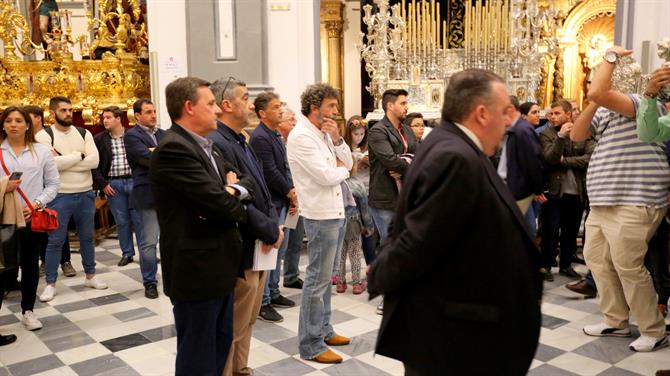
The titles of the positions in the Brotherhood may sound misleading but are based on the roles of each group. For example, “submarinos” are the people underneath the throne while the people located at the side of the throne, carrying the weight on their shoulders, are known as “hombres de trono”. The “submarinos” can remain in total darkness under the heavy throne throughout the entire procession (about 9 hours). The huge, richly decorated floats attract attention and are considered as art by some, however when you witness the throne from beneath you realise that it’s more like a cage.
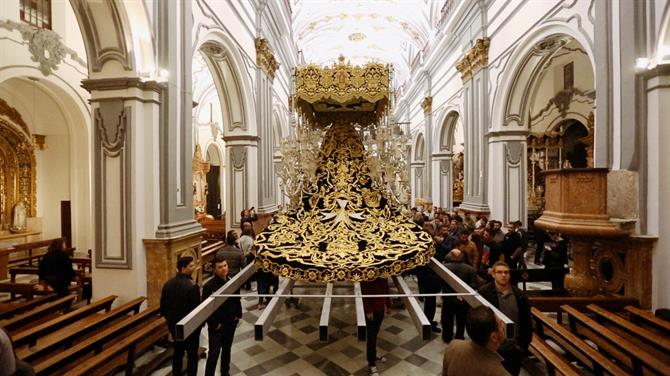
In the upper part there are beams between which the submarinos are set, the cloths of decorated fabric fall alongside them limiting the airflow. Standing side-by-side with little space to move around and wearing tunics often made of wool in the heat can be oppressive.
Struggling with the weight, the heavy breathing of your companions, the rising temperature below the throne and numb hands, how can they focus when the mayordomo orders them to raise the float?
Carlos says: “My thoughts are focused on my family, the ones who are no longer with us and the figure I carry on my shoulders. First of all, I think about those people who are beloved by me, because at some point, there is no strength, and the throne must be lifted by the heart.”
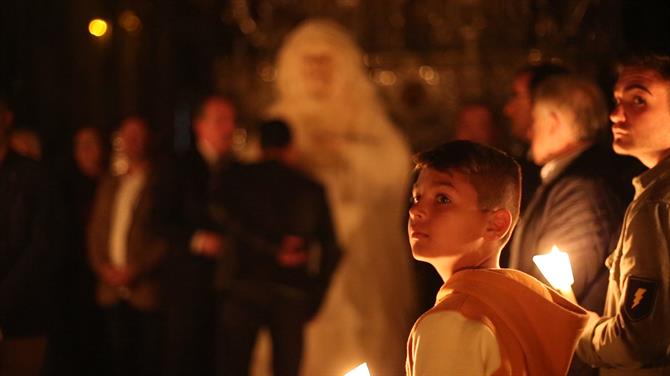
Who would say that carrying an enormous throne is a privilege? The rumours and urban myths claim that there are lists for members who are interested in carrying the platform. It turns out that these are not myths at all and for some Brotherhoods there is a wait of up six years.
Eduardo, one of the mayordomos of the fraternity, explains that “being 'hombre de trono' is a great honour because you can carry Christ or the beloved Virgin on your shoulders, the experience is definitely bigger than just participating in a procession. These are figures that are very popular, for example to carry Virgen de Lágrimas y Favores you have to wait two to three years.”
The brothers we’ve talked to are hopeful, optimistic and strongly believe in what they do. The only thing they are afraid of during Holy Week is the rain. They say: “When it rains, our world is falling apart in a way. The whole year of preparation, hope and goodwill disappears with every falling drop.”
To get the full authentic experience, stay in an apartment in Malaga city during Semana Santa and take part in the passionate celebrations.
